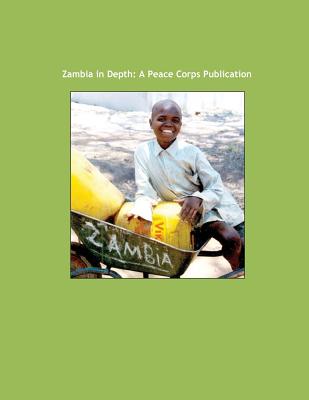You are here
Back to topZambia in Depth: A Peace Corps Publication (Paperback)
$7.95
Usually Ships in 1-5 Days
Description
Zambia was relatively untouched by the outside world until the mid-19th century, when it was visited by Western explorers, missionaries, and traders. In 1855, David Livingstone became the first European to see the magnificent waterfalls on the Zambezi River. Known locally as Musi-o-tunya, or the "Smoke that Thunders," Livingstone renamed the falls after Queen Victoria. The Zambian town near the falls is named after him, and served as the capital of what was called Northern Rhodesia until 1935. In 1888, Northern and Southern Rhodesia (now Zambia and Zimbabwe, respectively) were proclaimed a British sphere of influence. Southern Rhodesia was annexed formally and granted self-government in 1923, while the administration of Northern Rhodesia was transferred to the British colonial office in 1924 as a protectorate. In 1953, both Rhodesias were joined by Nyasaland (now Malawi) to form the Federation of Rhodesia and Nyasaland.The Republic of Zambia gained its independence from Britain on October 24, 1964. Kenneth Kaunda, the leader of the United National Independence Party, was named the first president and remained in power until 1991. After nearly three decades of one-party rule and worsening economic conditions, the Kaunda era came to an end. In November 1991, the Movement for Multiparty Democracy (MMD) won Zambia's first free presidential and general elections since 1968. Frederick Chiluba was subsequently sworn in as the nation's second president and was reelected in 1996. In 2002, Levy Mwanawasa was elected president under the banner of the MMD. He was re-elected in 2006, but died of a heart attack in August of 2008. He was succeeded by Rupiah Banda. He served until September 2011 when Patriotic Front (PF) candidate Michael Sata was elected as president.Historically, copper has provided the majority of the country's foreign exchange earnings and been the leading source of employment. However, the drastic decline in copper market values, a slow rate of industrialization, and a high dependence on foreign imports drove Zambia's economy into an extended decline. Through the early-1990s, Zambia experienced one of the worst economic growth rates in the world. In an effort to halt two decades of economic decline, the country undertook an ambitious economic recovery program. A cornerstone of this program has been the privatization of parastatal industries (including copper mines). However, the nation's extremely high rate of HIV/AIDS infection, along with an unstable food supply and drought, continues to hamper development efforts. Recently, however, copper prices have drastically improved and the mining sector has resumed its position as the No.1 income generator for the country. The government has continued to promote and support the agriculture sector, which is the mainstay of most rural Zambians.
